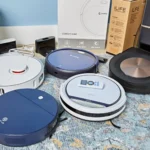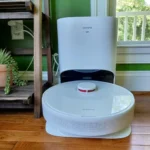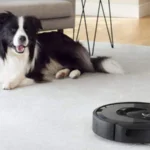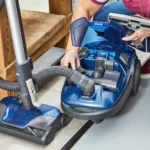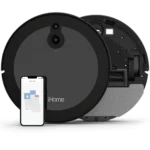When it comes to keeping your home clean, a smart vacuum cleaner can be a game-changer. These devices use advanced technology to clean your floors effortlessly while you sit back and relax. But with the various suction power options available, it can be challenging to determine which one is best for your needs. Do you need high suction power to tackle pet hair, or will a moderate range suffice? How do you even measure suction power? In this article, we will explore everything you need to know about choosing the right suction power for your smart vacuum cleaner. So sit tight and get ready to learn!
What Is Suction Power?
Suction power is a term used to describe the ability of a vacuum cleaner to remove dirt and debris from surfaces. It is a critical factor in determining the effectiveness of your smart vacuum cleaner. The suction power of a vacuum cleaner is measured by several factors, including air watts, cubic feet per minute (CFM), pascals (Pa), and watts.
Air watts is a common measurement used to determine the suction power of a vacuum cleaner. It considers both the airflow and the pressure of the vacuum to provide a more accurate measurement of suction power. CFM refers to the amount of air that the vacuum cleaner can move in a minute, and it is another factor to consider when determining suction power. Pascals is a measurement of the pressure of the suction, which indicates how effectively the vacuum cleaner can lift dirt and debris from surfaces.
When choosing the right suction power for your smart vacuum cleaner, it is essential to understand these measurements to ensure that you select the most effective option for your specific needs. The suction power required will depend on several factors, such as the type of surfaces to clean, pet hair and allergies, amount of dirt and debris, battery life, and budget. Understanding your specific requirements for suction power will help you make a well-informed decision.
For example, households with pets or allergy sufferers will require a vacuum cleaner with sufficient suction power to remove pet hair and other allergens. Similarly, households with large spaces or high amounts of dirt and debris will benefit from a vacuum with a higher suction power range. On the other hand, budget-conscious consumers may opt for a smart vacuum cleaner with limited suction power range.
It is worth noting that a high suction power range does not always translate to better cleaning. Other factors such as mapping tech, dustbin capacity, HEPA filters, noise level, and smart sensors also play a role in the effectiveness of smart vacuum cleaners. By selecting the right suction power range and evaluating these other factors, you can ensure that your smart vacuum cleaner meets the unique needs of your household.
To learn more about choosing the right smart vacuum cleaner, check out our comprehensive smart vacuum cleaner guide, which offers detailed information on all the factors you need to consider before making your purchase.
Why Is Choosing the Right Suction Power Important?
Choosing the right suction power is important because it determines how effectively your smart vacuum cleaner can clean different surfaces and types of debris. If the suction power is too low, it may not be able to pick up all dirt and debris, while if it’s too high, it can damage delicate surfaces and scatter debris around the room.
Different types of debris require different levels of suction power to clean. For example, pet hair can easily get tangled and stuck in carpet fibers, so a stronger suction power is needed to effectively pull it out. On the other hand, a lower suction power may be more appropriate for cleaning hard floors without scratching them.
Aside from the type of surface or debris, choosing the right suction power is also important for the battery life of your smart vacuum cleaner. If the suction power is too high, it can drain the battery faster, requiring more frequent charging. This can be especially important if you have a larger home or several rooms to clean.
The right suction power can also impact the noise level of your smart vacuum cleaner. Higher suction power may produce more noise and disturb the peace in your home, so it’s important to consider all factors before making your final decision.
In short, choosing the right suction power is crucial in ensuring that your smart vacuum cleaner performs optimally for your specific cleaning needs. Considering factors such as the type of surface, debris, battery life, noise level, and budget can assist you in selecting the appropriate suction power for your smart vacuum cleaner. For more information on other factors to consider when purchasing a smart vacuum cleaner, check out our comprehensive smart vacuum cleaner guide.
Factors to Consider When Choosing Suction Power
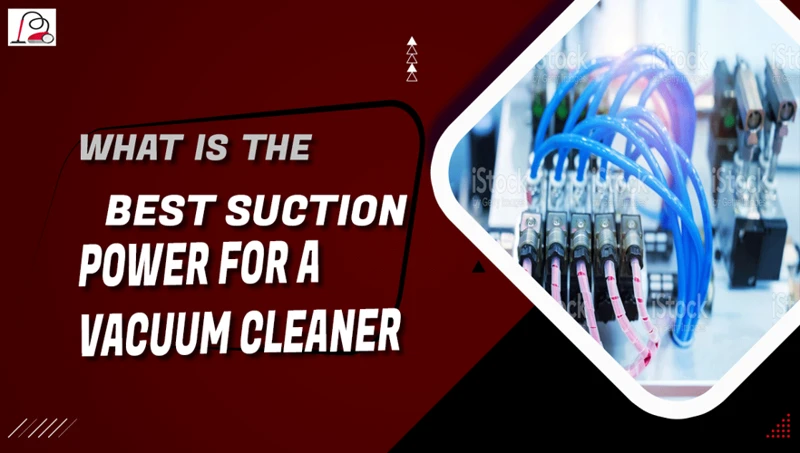
When it comes to choosing the right suction power for your smart vacuum cleaner, there are several factors to consider that can influence your decision.
Type of Surfaces to Clean: The type of flooring you have in your home can play a big role in the suction power you need for effective cleaning. Carpeted floors generally require higher suction power as they tend to hold onto dirt, pet hair, and debris more than hard floors. Hard floors like hardwood or tile, on the other hand, require less suction power to clean effectively.
Pet Hair and Allergies: If you have pets, you may need a vacuum cleaner with higher suction power to pick up pet hair effectively. Additionally, if anyone in your household suffers from allergies or asthma, a vacuum cleaner with a HEPA filter could be essential in removing allergens from the air.
Amount of Dirt and Debris: The amount of dirt and debris in your home should also be taken into account when choosing suction power. A home with high foot traffic or a lot of outdoor exposure will require more suction power to keep it clean.
Battery Life: If you have a cordless smart vacuum cleaner, you’ll want to consider the battery life when selecting suction power. Higher suction power can drain the battery faster, so you’ll need to balance the power with the amount of time you’ll be able to use it.
Budget: Of course, budget is always a factor when making a purchase. Higher suction power can often mean a higher price tag, so it’s important to consider how much you’re willing to spend on a vacuum cleaner.
Each of these factors can play a crucial role in determining the optimal suction power for your smart vacuum cleaner. For more information on other important factors to consider when buying a smart vacuum cleaner, check out our articles on smart vacuum battery factors, dustbin capacity for smart vacuum buyers, selecting a smart vacuum for pet owners, and the benefits of HEPA filters in smart vacuums.
Type of Surfaces to Clean
When it comes to choosing the right suction power for your smart vacuum cleaner, the type of surfaces you plan to clean is a crucial factor to consider. Different surfaces require different suction power levels to achieve optimal cleaning results. Some smart vacuums come with sensors that detect the type of surface and adjust suction power accordingly. If your vacuum doesn’t have this technology, it’s essential to understand the different needs of surfaces like hardwood floors, carpets, or tiles. Also, the noise level of the vacuum and its smart sensors play an important role in its performance. To learn more about other factors to consider, check out our article on smart vacuum cleaning.
Pet Hair and Allergies
When it comes to choosing the right suction power for your smart vacuum cleaner, pet hair and allergies are two factors that should not be ignored. Pet hair, especially in large quantities, can clog up the vacuum’s filters and reduce its suction power. If you have pets, you’ll want to choose a vacuum cleaner with a powerful motor that can handle the extra hair.
In addition to pet hair, allergies can also influence your choice of suction power. If you or someone in your household suffers from allergies or asthma, you’ll want to choose a vacuum that is capable of picking up tiny particles such as dust mites, pollen, and pet dander.
To ensure that your vacuum cleaner can handle pet hair and allergies, consider the following factors:
- Filtration: Look for a vacuum cleaner that has a HEPA (High Efficiency Particulate Air) filter, as this type of filter can capture even the smallest particles, ensuring that your home stays allergen-free.
- Brush Roll: A vacuum cleaner with a motorized brush roll is ideal for picking up pet hair. Look for a vacuum cleaner that has a brush roll specifically designed for pet hair.
- Suction Power: As mentioned earlier, a vacuum cleaner with a high suction power is important for picking up pet hair and other debris, especially if you have a lot of carpets or rugs in your home.
- Noise Level: Some smart vacuum cleaners can be loud, which can be especially problematic if you have pets that are easily frightened by noise. Look for a vacuum cleaner with a low noise level or one that has a quiet mode.
- Sensors: Some smart vacuum cleaners come equipped with sensors that can detect where pet hair and debris are located in your home. This feature can help ensure that your vacuum cleaner thoroughly cleans all areas of your home.
By taking these factors into consideration, you can choose a smart vacuum cleaner that is equipped to handle pet hair and allergies, ensuring that your home stays clean and healthy. And if you want to learn more about mapping technology or smart sensors in smart vacuum cleaning, be sure to check out our other articles.
Amount of Dirt and Debris
When it comes to the amount of dirt and debris in your home, the suction power of your smart vacuum cleaner is incredibly important. Suction power determines how effectively your vacuum can pick up dirt, dust, and debris from surfaces in your home, so it’s crucial to choose the right suction power for your needs.
Higher suction power is generally better for deeper cleaning and picking up larger particles such as pet hair or debris from high-traffic areas. However, a vacuum with too much suction power may damage delicate carpets or upholstery. On the other hand, a lower suction power is better for more gentle cleaning of delicate surfaces.
The amount of dirt and debris in your home will also impact the suction power you need from your smart vacuum cleaner. If you have a lot of high-traffic areas or live in a dusty environment, you’ll want a vacuum with a higher suction power to ensure efficient cleaning.
To help you choose the right suction power for your needs, refer to the table below:
| Amount of Dirt and Debris | Ideal Suction Power Range |
|---|---|
| Light dust and debris on hard floors or low-pile carpets. | Limited suction power range (less than 700 Pa) |
| Regular dust and debris on hard floors and low to medium-pile carpets. | Mid suction power range (700 Pa-1500 Pa) |
| Heavy dirt and debris on all surfaces, including high-pile carpets. | High suction power range (Above 1500 Pa) |
As you can see, the amount of dirt and debris in your home should be a major factor when deciding on the best suction power for your smart vacuum cleaner.
Remember, too much suction power can damage delicate surfaces, while too little suction power makes it difficult to clean deeply. Finding the right balance is key to choosing a vacuum that will meet your cleaning needs.
If you need more information about the latest smart vacuum cleaning technology, you can read our article on mapping tech in smart vacuum cleaners. Alternatively, if you’re looking for a vacuum that is both powerful and quiet, see our article on smart vacuum noise level.
Battery Life
When it comes to choosing the right suction power for your smart vacuum cleaner, battery life is an important factor to consider. A vacuum cleaner with excellent suction power won’t be of much use if it runs out of battery quickly.
Table:
| Battery Capacity | Runtime |
|---|---|
| Less than 2000mAh | Less than 60 minutes |
| 2000-4000mAh | 60-120 minutes |
| Above 4000mAh | Above 120 minutes |
The battery capacity of a smart vacuum cleaner determines how long it can clean before needing to be recharged. The runtime of a vacuum cleaner depends on several factors, including the suction power setting, the type of surfaces being cleaned, and the amount of debris.
If you have a large home or want to clean multiple rooms without needing to recharge, it’s best to choose a smart vacuum cleaner with a higher battery capacity. However, keep in mind that a higher battery capacity can increase the overall cost of the vacuum cleaner.
It’s also worth noting that some smart vacuum cleaners come with features that help maximize battery life. For example, some models use smart sensors to avoid obstacles and optimize their cleaning path, which can help conserve battery power. If battery life is a concern for you, consider investing in a smart vacuum cleaner with these features.
Link: If you want to learn more about smart sensors and how they can improve your smart vacuum cleaning experience, check out our article on smart sensors and smart vacuum cleaning.
Budget
When choosing a smart vacuum cleaner, budget is one of the most important factors to take into consideration. Smart vacuums come in a variety of price ranges, so it’s crucial to have a budget in mind before making a purchase. Here are some things to keep in mind when considering your budget:
- Expensive Doesn’t Always Mean Better: Just because a smart vacuum cleaner is expensive doesn’t mean it’s the best option for you. In fact, some budget-friendly options can perform just as well as their more expensive counterparts. However, it’s important not to sacrifice quality for cost.
- Do Your Research: When choosing a smart vacuum cleaner, it’s important to do your research and read reviews from other users. This can help you find a high-quality option that fits within your budget.
- Consider Additional Costs: When budgeting for a smart vacuum cleaner, it’s important to consider any additional costs that may come with the device. This may include replacement filters or brushes, which can add up over time.
- Look for Deals: Many retailers offer discounts and deals on smart vacuum cleaners, especially during holiday seasons. It’s worth keeping an eye out for promotions and sales to help you stay within your budget.
It’s important not to let budget be the only factor in your decision-making process. While it’s crucial to choose a smart vacuum cleaner that fits within your budget, it’s equally essential to find one that meets your cleaning needs and can perform well on the surfaces in your home. By doing your research and considering all the factors, you can find a smart vacuum cleaner that fits both your budget and your cleaning needs.
Understanding Suction Power Measurement
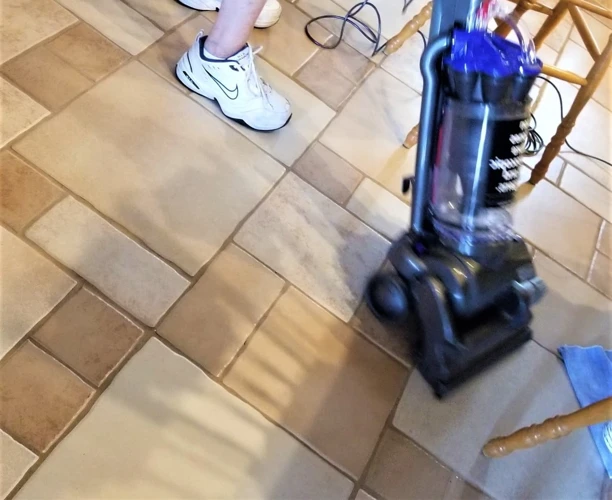
When it comes to buying a smart vacuum cleaner, understanding the suction power measurement is critical to make an informed decision. But what exactly do terms like Air Watts, cubic feet per minute (CFM), Pascals (Pa), and watts actually mean? In this section, we will delve into the technical aspects of suction power and explain how each measurement unit impacts performance. So, let’s dive in and decode the world of suction power measurement!
Air Watts
When it comes to measuring suction power, one of the most commonly used metrics is Air Watts. Air Watts is a measurement of the actual suction power that a vacuum cleaner can generate. This measurement takes into account both the amount of air that is moved through the vacuum cleaner and the amount of suction that is created. In other words, the Air Watts measurement takes into account the effectiveness of the vacuum cleaner’s motor in creating suction.
Air Watts Table
| Air Watts | Vacuum Cleaner Type | Suction Power | Examples |
|---|---|---|---|
| Less than 100 AW | Handheld | Low Suction Power | Black and Decker CHV1410L |
| 100-200 AW | Stick or Upright | Medium Suction Power | Dyson V7 or Shark Navigator SV1106 |
| Above 200 AW | Canister or Heavy-duty | High Suction Power | Dyson Cyclone V10 Absolute or Shark Apex Zero-M |
It is important to note that Air Watts is not the only factor to consider when choosing the right suction power for your smart vacuum cleaner. However, it is a useful metric to keep in mind as it provides a good indicator of the vacuum’s suction power. When choosing a vacuum cleaner, it’s crucial to consider your specific needs and the surfaces you’ll be cleaning, as well as the other factors listed in this article.
Cubic Feet per Minute (CFM)
Cubic Feet per Minute (CFM)
CFM is a unit used to measure the amount of air that a vacuum cleaner can move in one minute. The higher the CFM of a vacuum cleaner, the more powerful it is. It is an important factor to consider when choosing the right suction power for your smart vacuum cleaner.
Vacuum cleaners with higher CFM ratings are well-suited for heavy-duty cleaning tasks like removing embedded dirt and stubborn pet hair. On the other hand, vacuum cleaners with lower CFM ratings are ideal for light cleaning tasks.
Below is a table showing the range of CFM ratings and the type of cleaning tasks each range is suited for:
| CFM Range | Type of Cleaning Tasks |
| Less than 50 CFM | Light cleaning tasks like cleaning hardwood floors, dusting and cleaning corners. |
| 50-100 CFM | Cleaning tasks like vacuuming carpets, upholstery, and removing pet hair. |
| Above 100 CFM | Heavy-duty cleaning tasks like cleaning industrial areas, garages, and workshops. |
While CFM is an important factor to consider when choosing the right suction power, it is not the only factor. It is recommended that you also consider other factors like the type of surfaces you will be cleaning, the amount of dirt and debris, and your budget.
By considering all of these factors, you can choose the right suction power for your smart vacuum cleaner that will clean your floors effectively and efficiently.
Pascals (Pa)
Pascals (Pa) refer to the unit of measurement for pressure. In the context of smart vacuum cleaners, it is used to measure the suction power. Suction power is essentially the force by which the vacuum cleaner can suck in air and dirt from a surface. The higher the suction power of the vacuum cleaner, the more effectively it can clean surfaces.
How is suction power measured in Pascals?
The measurement of suction power in Pascals indicates the amount of pressure that the vacuum cleaner generates within the cleaning head. This measurement is taken by a device called a manometer. The device measures the pressure difference between the ambient air pressure and the pressure inside the vacuum cleaner.
Some vacuum cleaners indicate the suction power in kPa (kilopascals) instead of Pascals. 1 kPa equals 1000 Pascals.
What suction power range is considered high in Pascals?
Generally, a suction power range of above 20,000 Pa is considered high for a vacuum cleaner. This level of suction power is suitable for heavy-duty cleaning of carpets and deep cleaning of hard floors. Vacuum cleaners with high suction power are generally more expensive but offer the best cleaning performance.
What suction power range is considered low in Pascals?
Vacuum cleaners with a suction power range of less than 5,000 Pa are considered low in suction power. These vacuum cleaners are suitable for light cleaning of hard floors and low-pile carpets. However, they may not be effective in cleaning carpets with deep pile or removing embedded dirt and pet hair.
What should be considered when choosing a vacuum cleaner based on Pascals?
The suction power in Pascals is just one of the factors to consider when choosing a vacuum cleaner. Other factors such as the type of surfaces to clean, battery life, and budget should also be taken into account. Additionally, it is important to consider the air filtration system of the vacuum cleaner, especially if you or anyone in your household has allergies or asthma.
Watts
When it comes to measuring suction power, you may come across the term “watts.” Watts are a unit of power that measures the amount of electrical energy a vacuum motor consumes. However, watts alone cannot give you a complete picture of a vacuum’s suction power. That’s because watts do not take into account other factors like the efficiency of the motor and the design of the vacuum.
To better understand the role of watts in vacuum suction power, let’s take a look at how it relates to air flow. The higher the watts, the more power the motor has to move air through the vacuum’s intake and exhaust ports. However, if the design of the vacuum is inefficient or there are clogs in the system, the high watts may not necessarily translate to high suction power.
Here are some key points to keep in mind about watts:
- Watts alone do not provide a full picture of suction power.
- A vacuum with high watts may not necessarily have high suction power if the design is not efficient.
- Efficiency and air flow design are important factors to consider alongside watts when choosing a vacuum.
When shopping for a smart vacuum cleaner, it’s important to look beyond just the wattage and consider other factors such as air watts, CFM, and Pa measurement. By taking into account all of these factors, you can choose a vacuum with the right suction power for your home’s needs.
Choosing the Right Suction Power Range
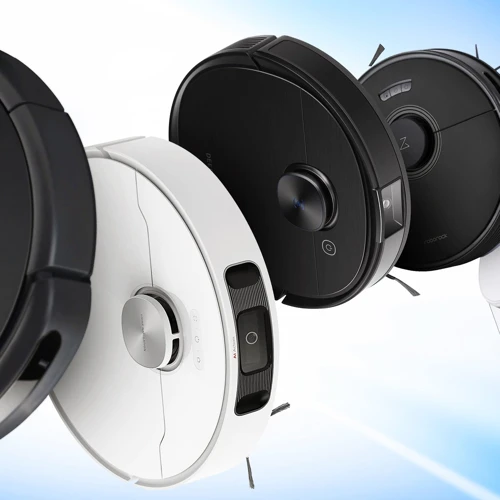
Picking the optimum suction power range for your smart vacuum cleaner can be a daunting task. With a plethora of options available in the market, each with its own unique features and specifications, it’s easy to get confused. However, the suction power is a crucial factor that you must pay attention to when choosing a smart vacuum cleaner. The right suction power ensures that your cleaning needs are met with ease and efficiency. Hence, it’s essential to understand different suction power ranges to make an informed decision. In this section, we’ll walk you through the various suction power ranges and their ideal uses, making it easier for you to choose the right option for your needs.
Limited Suction Power Range (Less than 700 Pa)
When it comes to limited suction power range, bear in mind that it is considered the weakest of all suction power options. It is usually less than 700 Pa, which is an indication that it is fit only for light cleaning tasks. It is not recommended for areas with too much dirt and debris or for cleaning carpets with dense fibers.
Pros:
- Lightweight and portable
- Less expensive than higher suction power options
- Works well for small spaces, such as apartments or dorm rooms
Cons:
- Not suitable for heavy-duty cleaning tasks
- May struggle with pet hair, especially in carpets
- Limited battery life
- May require more passes on the same spot to gather all the dirt and debris
So, if you have a small living space or a tight budget, a vacuum cleaner with a limited suction power range may be the right option for you. Just ensure that you do not expect it to work miracles and that it will have its limitations.
Mid Suction Power Range (700 Pa-1500 Pa)
In the mid suction power range, the vacuum cleaners offer a balance between suction power and energy efficiency. This suction range is suitable for average cleaning needs, including low to medium pile carpets, hardwood floors, and some types of harder-to-clean surfaces.
Advantages:
- Adequate suction power for efficient cleaning of low to medium pile carpets, hardwood floors, and other floor types.
- Less noisy than high suction power vacuum cleaners.
- Generally more affordable than high suction power vacuum cleaners.
- Easier on the battery, resulting in longer run time.
- Less battery consumption means more affordable electricity bill.
Disadvantages:
- May struggle with deep cleaning of high pile carpets or heavily soiled areas.
- May require more passes or additional cleaning tools for efficient cleaning.
When selecting a vacuum cleaner with mid suction power, consider the type of surface you will be cleaning and the level of dirt and debris expected. Remember that some mid suction power vacuum cleaners may have additional features or suction-enhancing technologies that positively impact their overall cleaning performance.
High Suction Power Range (Above 1500 Pa)
When it comes to choosing the right suction power range for your smart vacuum cleaner, opting for a high suction power range above 1500 Pa can be ideal for those with large homes, numerous pets, and heavy foot traffic. This suction power range is also suitable for picking up larger debris such as food crumbs and pet food.
Since a high suction power range will generate more noise and consume more battery, it’s important to use it selectively. For example, using it at high power on hard floors and carpets can be very effective in picking up dust, pet hair, and other debris, but it may not be necessary for low-pile carpets or rugs.
Here are some of the key benefits and considerations to keep in mind when selecting a high suction power range:
| Benefits | Considerations |
|---|---|
|
|
While a high suction power range can be a fantastic choice for those with specific cleaning needs, it’s important to weigh the advantages against the disadvantages of this option to ensure that you make the best choice for your smart vacuum cleaner.
Tips for Maintaining Your Smart Vacuum Cleaner
Keeping your smart vacuum cleaner in good condition is important to ensure its longevity and optimum performance. Regular maintenance will not only help prevent breakdowns but also keep your home cleaner and healthier. In this section, we will discuss some useful tips and tricks that will help you maintain your smart vacuum cleaner and keep it running like new. These simple steps can make a big difference in the life and efficiency of your vacuum cleaner, allowing you to enjoy a cleaner and more comfortable home with ease. So, let’s dive into these easy and practical maintenance tips for your smart vacuum cleaner.
Clean or Replace Filters Regularly
When it comes to maintaining your smart vacuum cleaner, one of the most important things to keep in mind is to clean or replace filters regularly. Filtration is important to ensure that the vacuum cleaner picks up all the dirt and debris in the air and on the surfaces.
Different types of filters are used in smart vacuum cleaners. These filters capture and store dirt, dust and small particles to keep the air clean. Some of the commonly used filters include foam, HEPA, and pre-motor filters. However, overuse of filters can lead to clogging and may impact the vacuum’s suction power.
It’s important to check your vacuum cleaner’s filter regularly, at least once a month, and replace it if it is clogged or dirty. This will help ensure proper filtration and optimal performance of your smart vacuum cleaner. Note that some filters are reusable and some need to be replaced; be sure to check the vacuum cleaner’s manual for details.
Here are some factors to consider when cleaning or replacing the filters:
| Factors to Consider for Cleaning/Replacing Filters | Details |
|---|---|
| Type of filter | Different types of filters may use different cleaning methods or may need to be replaced altogether |
| Frequency of use | The more you use your vacuum cleaner, the more often you will need to clean or replace the filter |
| Type of debris being collected | If you’re vacuuming up fine dust particles or pet hair, you may need to clean or replace the filter more often |
| Quality of the filter | Higher quality filters may last longer and not need to be replaced as often |
Regularly cleaning or replacing filters can help extend the life of your smart vacuum cleaner and ensure that it continues to perform optimally for years to come. And, always make sure to follow manufacturer recommendations for proper filter maintenance to get the most out of your vacuum.
Empty Dustbins Frequently
One of the most important maintenance tasks for your smart vacuum cleaner is to empty its dustbin frequently. The dustbin is the container that collects all the dirt, dust, and debris that the vacuum picks up. Not emptying the dustbin often enough can impair your vacuum’s performance and shorten its lifespan.
The following are some reasons why you should empty the dustbin frequently:
- Prevent Clogging: As the dustbin fills up, it becomes more difficult for the vacuum to maintain suction power. When the bin is full, the dirt and debris can clog the filters and other parts, which can impact the vacuum’s performance. It is important to empty it promptly when it is full to avoid any such issues.
- Reduce Odors: If the dustbin is not emptied frequently, it can start to emit unpleasant odors. Many smart vacuum cleaners have filters and other odor-reducing technologies, but they are still not entirely immune to such issues. Make sure to empty the dustbin to keep nasty smells at bay.
- Improve Cleaning Efficiency: An overly full dirtbin can make it harder for the vacuum to navigate through your home. It may even avoid certain areas with large debris, leaving parts of your home untouched which decreases the cleaning efficiency of the device.
To make sure that your vacuum is always performing its best, it’s important to empty its dustbin frequently. The frequency at which it needs to be emptied depends on the frequency of use and the amount of dirt and debris you have in your home. A good rule of thumb is to empty the bin after every cleaning session for a smart vacuum cleaner.
Clean the Brush Roll
One important task to do when maintaining your smart vacuum cleaner is to clean the brush roll. The brush roll is responsible for picking up dirt and debris from carpets and floors, and if it’s not cleaned regularly, it can become clogged with hair and debris. This can cause the vacuum cleaner to lose suction power and not perform as well as it should.
Steps to Clean the Brush Roll:
| Step | Description |
|---|---|
| 1. | Make sure the vacuum cleaner is turned off and unplugged. |
| 2. | Locate the brush roll on the bottom of the vacuum cleaner. |
| 3. | Use a screwdriver to remove the brush roll cover, if necessary. |
| 4. | Remove any hair or debris from the brush roll with a pair of scissors or a brush. |
| 5. | Check the ends of the brush roll for any tangled hair or debris and remove it. |
| 6. | Replace the brush roll cover and screw it back into place, if necessary. |
| 7. | Plug the vacuum cleaner back in and turn it on to make sure the brush roll is working properly. |
By cleaning the brush roll regularly, you can ensure that your smart vacuum cleaner continues to work efficiently and effectively. This simple maintenance step can also help prolong the life of your vacuum cleaner and save you money in the long run.
Check for Tangled Hair and Debris
When it comes to maintaining your smart vacuum cleaner, one important aspect is to check for tangled hair and debris. This is especially important if you have pets in your household, as pet hair can easily become tangled in the bristles of the brush roll.
To ensure efficient performance of your smart vacuum cleaner, regularly check the brush roll for any hair or debris that may have become tangled around it. Use a pair of scissors, tweezers or any other tool that’s gentle on the bristles to carefully remove any tangled hair or debris from the brush roll. A clogged brush-roll can significantly reduce the suction power of your vacuum cleaner, causing it to lose efficiency.
Another area to check for debris is your vacuum’s wheels. Dirt, dust, and hair can easily get entangled in the wheels, which can cause them to slow down or get damaged if not cleaned regularly. Carefully remove any debris found on the wheels using a soft brush or a clean damp cloth.
It’s also important to check the suction nozzle of your vacuum cleaner for any debris or clogs. Strong suction power is of no use if debris has blocked the nozzle, so regularly check and clean the nozzle to avoid this. Inspect the nozzle to ensure there are no blockages or clogs, and clear any debris you might find.
It’s surprising how much dust, dirt and hair can accumulate in and around the parts of a smart vacuum cleaner, so it’s essential to stay on top of maintenance. By regularly checking for tangled hair and debris, you can ensure maximum efficiency and longevity of your smart vacuum cleaner. Remember, a little care and attention can go a long way in ensuring the performance of your smart vacuum cleaner.
Conclusion
In conclusion, choosing the right suction power for your smart vacuum cleaner is crucial in ensuring that it effectively and efficiently cleans your floors and surfaces. Taking into consideration factors such as the type of surfaces to clean, pet hair and allergies, amount of dirt and debris, battery life, and budget can help narrow down your options and make an informed decision.
Understanding suction power measurement, including Air Watts, Cubic Feet per Minute (CFM), Pascals (Pa), and Watts, can further guide you in choosing the right suction power range for your needs.
It’s also important to note that maintaining your smart vacuum cleaner is essential in keeping its suction power at its best. Regularly cleaning or replacing filters, emptying dustbins frequently, cleaning the brush roll, and checking for tangled hair and debris are simple yet effective ways to ensure that your smart vacuum cleaner continues to perform well.
Investing in a smart vacuum cleaner with the right suction power and taking proper care of it can make cleaning your home a breeze, giving you more time to focus on the things that matter most to you. So go ahead and make the smart choice for your home and enjoy hassle-free cleaning!
Frequently Asked Questions
How do I know if my vacuum cleaner has the right suction power?
You can check the suction power rating of your vacuum cleaner, which is usually listed on the product manual or the manufacturer’s website. Alternatively, you can assess the level of suction power based on the type of surfaces you need to clean, amount of dirt and debris, and whether you have pets or suffer from allergies.
Can having too much suction power damage my floors?
Yes, excessive suction power can damage some types of floors, particularly those with delicate finishes such as hardwood. Make sure to choose a suction power range that corresponds to the type of surface you need to clean so that you don’t risk causing any damage.
Should I choose a vacuum cleaner with high suction power if I have pets?
Yes, pet hair and dander can be more challenging to clean, and a vacuum cleaner with high suction power is better suited to remove debris from carpets and upholstery. Look for a vacuum cleaner with specialized pet hair attachments to achieve optimal results.
Do I need to replace my vacuum cleaner’s filter?
Yes, it is essential to replace or clean your vacuum cleaner’s filter regularly to ensure optimal suction power and prevent dust and allergens from being redistributed into the air. Check your vacuum cleaner’s manual for specific instructions on how often you should replace the filter.
What is the difference between air watts and pascals?
Air watts are used to measure the level of suction power that a vacuum cleaner has, while pascals measure the vacuum’s suction force. Air watts take into account not only the suction power but also the airflow, while pascals measure just the suction force.
Are cordless vacuums less powerful than corded vacuums?
Cordless vacuums can provide a lot of suction power, but their battery life may limit the amount of time you can use them. Corded vacuums offer unlimited power, but you may be restricted in your movement due to the cord’s length.
How often do I need to empty my vacuum cleaner’s dustbin?
You should empty your vacuum cleaner’s dustbin after each use or when it reaches its maximum capacity. Overfilling the dustbin can lead to decreased suction power and may cause the vacuum cleaner to clog, reducing its efficiency.
Can I vacuum wet surfaces with my vacuum cleaner?
No, most vacuum cleaners are not suitable for cleaning wet surfaces. Water can damage the vacuum cleaner’s motor and electrical components, and may also pose a risk to the user’s safety. Always refer to the product manual for specific instructions on what surfaces can be safely cleaned with your vacuum cleaner.
How do I maintain the brush roll of my vacuum cleaner?
You can maintain your vacuum cleaner’s brush roll by removing any tangled hair or debris regularly. It’s also a good idea to clean the brush roll with a soft cloth or a brush and ensure that the belt is functioning correctly.
Can I use my vacuum cleaner to remove bed bugs?
Yes, vacuum cleaners can be effective in removing bed bugs from surfaces. However, it is crucial to use specialized attachments and dispose of the contents of the dustbin outside to prevent bed bugs from spreading to other areas of your home.



